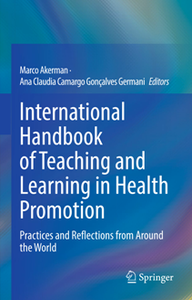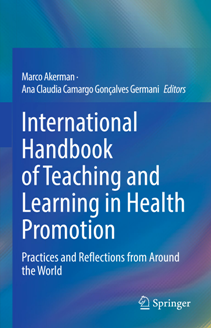International Handbook of Teaching and Learning in Health Promotion : Practices and Reflections from Around the World
by Marco Akerman
English | 2022 | ISBN: 3030960048 | 761 Pages | True ePUB | 34.7 MB
by Marco Akerman
English | 2022 | ISBN: 3030960048 | 761 Pages | True ePUB | 34.7 MB
This international handbook brings together researchers and teachers from 25 countries of the five continents to share their experiences of teaching health promotion in undergraduate and graduate courses related to different health professions. Chapter authors share teaching methodologies used in classes, discuss the competencies students need to learn and indicate research opportunities. Readers will be provided with real-world examples of empowering, participatory, holistic, intersectoral, equitable and sustainable teaching/learning strategies that aim to improve health and reduce health inequities.
This handbook was edited by an editorial board formed by 12 members of the International Union for Health Promotion and Education (IUHPE) from seven countries – Brazil, Belgium, Canada, Israel, New Zealand, Taiwan and UK –, and includes 45 chapters organized in seven thematic sections, each one dedicated to a different aspect of the process of teaching and learning health promotion:
The health promotion curriculum
Making health promotion relevant to practice
Pedagogies for health promotion
Special topics for health promotion
Health promotion assessment and quality assurance
Health promotion as a transformational practice
Students’ reflections
The International Handbook of Teaching and Learning in Health Promotion: Practices and Reflections from Around the World aims to encourage a dialogue between teaching and learning practices carried out locally and the possibilities of replicating these experiences globally, recognizing cultural differences and similarities. This handbook is intended for a wide range of readers, including education and training providers, health professionals and health care students. Due to its intersectoral and interdisciplinary approach, it will also be of interest to teachers and students in other fields of the Social Sciences, such as Urban Planning, Social Work, Public Policy, International Relations and Population Studies.



